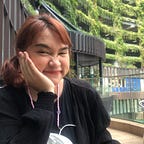How Public Space Will Change After Pandemic?
The city was supposed to-be the center of human life but was it designed with humans in mind? In recent years, urban experts have thought of one solution to the problem- placemaking. One of the most famous definitions of placemaking is from Jane Jacobs in her 1962 book The Death and Life of Great American Cities,
The city can provide something for everyone, simply because, and only if, it was created by everyone.
The implementation of placemaking is collectively reorganize and rediscover public space, turning it into an emotionally satisfying place to live. Placemaking is more than just design and architecture by considering all aspects of the place: physical, cultural, social, even spiritual. This makes it as complicated as the idea of “place identity” and “place attachment”.
With the Covid-19 pandemic, it turns out that it has great relevance to the formation of future placemaking in the face of recession. Re-creating public spaces that are accessible to the public and creative in reorganizing resilient public spaces will be key to short-term recovery and, also drive the long-term attractiveness of the place by ensuring the health and resilience of the community and by improving the quality of life of all communities. Against the backdrop of uncertain pandemic conditions, a study from Jan Gehl states that physical public space has become a mechanism to prevent, fight, and control the spread while providing the intrinsic impact these spaces offer. But success cannot be guaranteed.
Therefore, a city needs to utilize public space as part of its city reopening strategy. These things can reach social and economic consequences in addition to real health impacts. The definition of public space itself is a space that has the function of sheltering community activities, both individuals and groups, where the form of public space is also very dependent on the pattern and composition of the building period.
While scientists are still struggling to find the Covid-19 vaccine, one thing is certain is that we must learn to accept this condition temporarily or perhaps forever. This requires us to rethink the meaning of public space. Not only deco modify the process of production public space but also must provide an approach that present meaning, function, and inclusive places. Creative placemaking is one of the right approaches.
Creative placemaking is understood as the involvement of arts and cultural elements by strategically diverse partners in shaping the physical and social character of a space to catalyze economic development, promote sustainable social change and improve the physical environment.
In the last 20 years, Minneapolis City Council, United Stated, has implemented creative placemaking principles that successfully promote social equality. The strategy of creative placemaking can help animate public spaces, rejuvenate road structures and landscapes, improve local business continuity and public safety, and unite the diversity of communities. Over the past few months, creative placemaking has evolved as a strategy in creating new opportunities for engaging community gatherings that continue to implement social imprisonment, this strategy is also more relevant than ever. According to a statement from Juanita Hardy, chief manager of a real estate and community development consulting firm in Silver Spring, Maryland, in a webinar from the Urban Land Institute, creative placemaking strategies are more relevant than ever. This pandemic that brought many disrupt does not make people reluctant to connect in social imprisonment. According to Hardy, public spaces that apply the principles of creative placemaking will continue to be in demand because people need a place to gather to witness while maintaining a safe distance. Also, the presence of an element of art can help promote healing from racial unrest and serve well as a component of the development of a healthy space.
